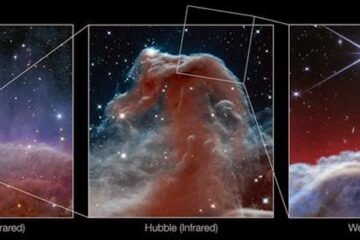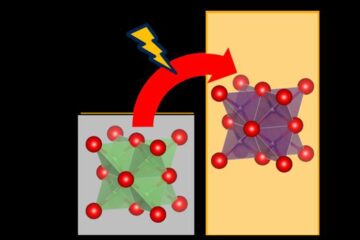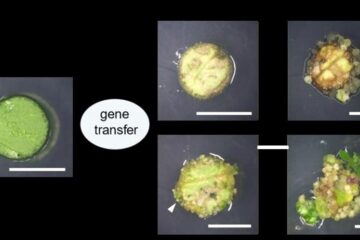Novel 'butterfly' molecule could build new sensors, photoenergy conversion devices

Biwu Ma, associate professor in the Department of Chemical and Biomedical Engineering in the FAMU-FSU College of Engineering, created the molecule in a lab about a decade ago, but has continued to discover that his creation has many other unique capabilities.
For example, the molecular butterfly can flap its “wings” and emit both blue and red light simultaneously in certain environments. This dual emission means it can create white light from a single molecule, something that usually takes several luminescent molecules to achieve.
And, it is extremely sensitive to temperature, which makes it a thermometer, registering temperature change by emission color.
“This work is about basic, fundamental science, but also about how we can use these unique findings in our everyday lives,” Ma said.
Among other things, Ma and his team are looking at creating noninvasive thermometers that can take better temperature readings on infants, and nanothermometers for intracellular temperature mapping in biological systems. They are also trying to create molecular machines that are operated simply by sunlight.
“These new molecules have shown very interesting properties with a variety of potential applications in emerging fields,” Ma said. “I have been thinking of working on them for quite a long time. It is so wonderful to be able to make things really happen with my new team here in Tallahassee.”
The findings are laid out in the latest edition of the academic journal Angewandte Chemie. Other authors for this publication are Mingu Han, Yu Tian, Zhao Yuan and Lei Zhu from the Chemistry and Biochemistry Department. Florida State has also filed a patent application on the work.
Ma came to Florida State in 2013 from the Lawrence Berkeley National Laboratory as part of a strategic push by the university to aggressively recruit and hire up-and-coming researchers in energy and materials science.
In addition to the faculty hires, the university has invested in top laboratory space and other resources needed to help researchers make technology breakthroughs.
“This type of research is why we continue to invest in materials science and recruit faculty like Biwu Ma to Florida State,” said Vice President for Research Gary K. Ostrander. “Making this area of research a priority shows why FSU is a preeminent institution, and we look forward to what Biwu and our other scientists can accomplish in the years to come.”
Media Contact
More Information:
http://www.fsu.eduAll latest news from the category: Life Sciences and Chemistry
Articles and reports from the Life Sciences and chemistry area deal with applied and basic research into modern biology, chemistry and human medicine.
Valuable information can be found on a range of life sciences fields including bacteriology, biochemistry, bionics, bioinformatics, biophysics, biotechnology, genetics, geobotany, human biology, marine biology, microbiology, molecular biology, cellular biology, zoology, bioinorganic chemistry, microchemistry and environmental chemistry.
Newest articles

Webb captures top of iconic horsehead nebula in unprecedented detail
NASA’s James Webb Space Telescope has captured the sharpest infrared images to date of a zoomed-in portion of one of the most distinctive objects in our skies, the Horsehead Nebula….

Cost-effective, high-capacity, and cyclable lithium-ion battery cathodes
Charge-recharge cycling of lithium-superrich iron oxide, a cost-effective and high-capacity cathode for new-generation lithium-ion batteries, can be greatly improved by doping with readily available mineral elements. The energy capacity and…

Novel genetic plant regeneration approach
…without the application of phytohormones. Researchers develop a novel plant regeneration approach by modulating the expression of genes that control plant cell differentiation. For ages now, plants have been the…





















